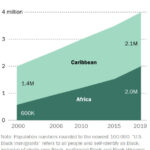Since its inception in 1975, Microsoft has grown from a small startup to a global technology powerhouse. The company’s products, from Windows to Xbox, have become integral parts of modern life. To manage its vast global operations and workforce, Microsoft needs a central hub that reflects its scale and ambition. So, Where Is Microsoft Headquarters located?
Find Top Jobs in SeattleSee Tech Companies Hiring Now
Discovering Microsoft’s Redmond Campus
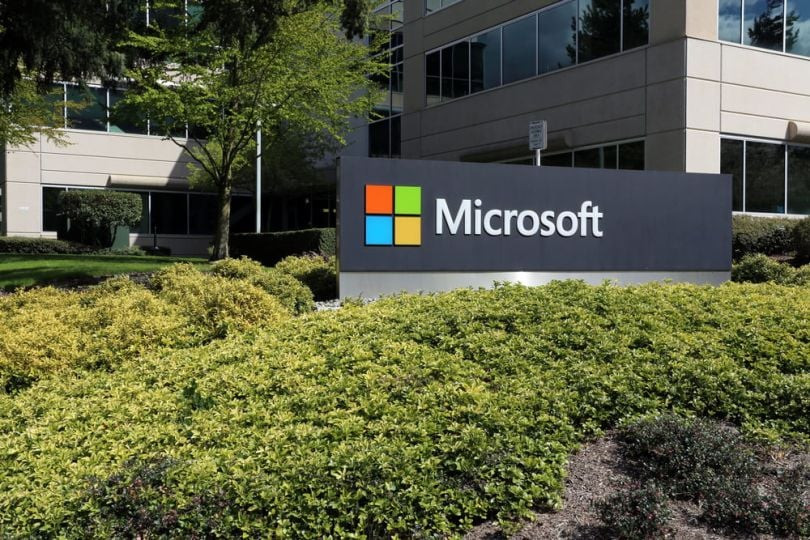 Microsoft Redmond Campus Exterior
Microsoft Redmond Campus Exterior
Image: shutterstock
While Microsoft operates numerous offices across the globe – over 600 to be precise – its official headquarters is situated in Redmond, Washington, a city nestled approximately thirty minutes away from Seattle. Interestingly, Microsoft’s journey began in Albuquerque, New Mexico. However, the company relocated to Bellevue, Washington in 1979 before finally settling in its current Redmond location in 1986. This pivotal move occurred just before Microsoft became a publicly traded company, marking a significant chapter in its history.
The sprawling Microsoft Redmond campus is strategically positioned in the southern part of Redmond, within northwest King County. It effectively straddles State Route 520 and is bordered by major roads like Bellevue-Redmond Road, 148th Ave NE, and NE 51st Street. Due to the sheer size of the campus, Microsoft provides its employees with an efficient transportation system. This includes hybrid bus and sedan shuttle services, known as “Shuttle Connect,” facilitating seamless movement between the various buildings spread across the campus. This service underscores Microsoft’s commitment to employee convenience and campus navigability.
Microsoft Headquarters: A City Within a City
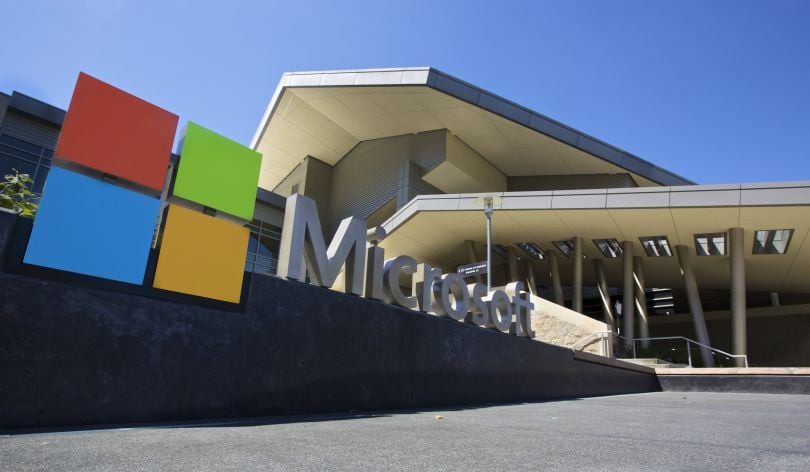 Aerial View of Microsoft Redmond Headquarters Campus
Aerial View of Microsoft Redmond Headquarters Campus
Image: Microsoft
To understand the scale of Microsoft’s Redmond headquarters, consider this: the company employs a staggering 134,944 individuals worldwide. Out of this global workforce, a significant portion, 80,283 employees, are based in the United States. Furthermore, Washington State is home to 50,294 Microsoft employees, with approximately 47,000 working directly at the Redmond headquarters.
If Microsoft’s Redmond headquarters were an independent city within Washington, it would rank as the 27th largest in the state in terms of population. This comparison effectively illustrates the immense scale and concentration of workforce at this single location, highlighting its significance as a major employment hub and a vital part of the Washington state economy.
Related: The 100 Best Tech Companies to Work for in Seattle
What Can You Find on the Microsoft Campus?
The expansive Redmond campus covers an impressive 500 acres. This vast area is developed into a network of 125 buildings alongside diverse outdoor spaces. These spaces are designed to cater to a wide range of employee needs and activities, including offices, collaborative workspaces, event venues, recreational facilities, a variety of dining options, retail shops, and numerous common areas. The campus is essentially a self-contained ecosystem designed to support and enhance the professional and personal lives of its employees.
Within this interconnected environment of work and leisure, Microsoft has thoughtfully integrated unique spaces aimed at enriching the employee experience. Here are some notable examples of the amenities and unique features found on the Microsoft Redmond campus:
Unique Treehouse Workspaces
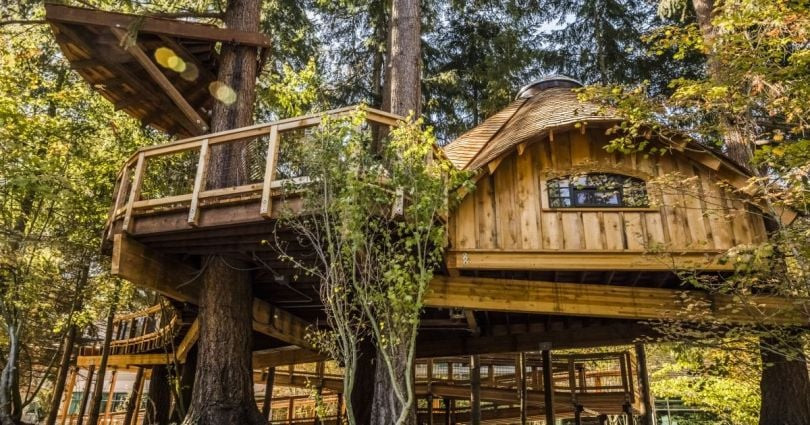 Microsoft Redmond Campus Treehouse Meeting Space
Microsoft Redmond Campus Treehouse Meeting Space
Image: Microsoft
Beyond the numerous office buildings, the Redmond campus uniquely features a collection of treehouses. These aren’t just for novelty; they are functional workspaces equipped with Wi-Fi, though perhaps, thankfully, without bugs. The treehouse complex includes enclosed meeting rooms and an elevated platform known as the “Crow’s Nest,” offering a unique and inspiring setting for collaboration and focused work.
Research indicates that immersion in nature can significantly boost creativity. Capitalizing on the lush natural beauty of the Pacific Northwest, Microsoft has created these treehouse spaces as an innovative alternative to traditional meeting rooms, fostering a more relaxed and creative atmosphere for its employees.
Related: 50 Seattle Tech Companies to Know
The Commons: An On-Campus Town Square
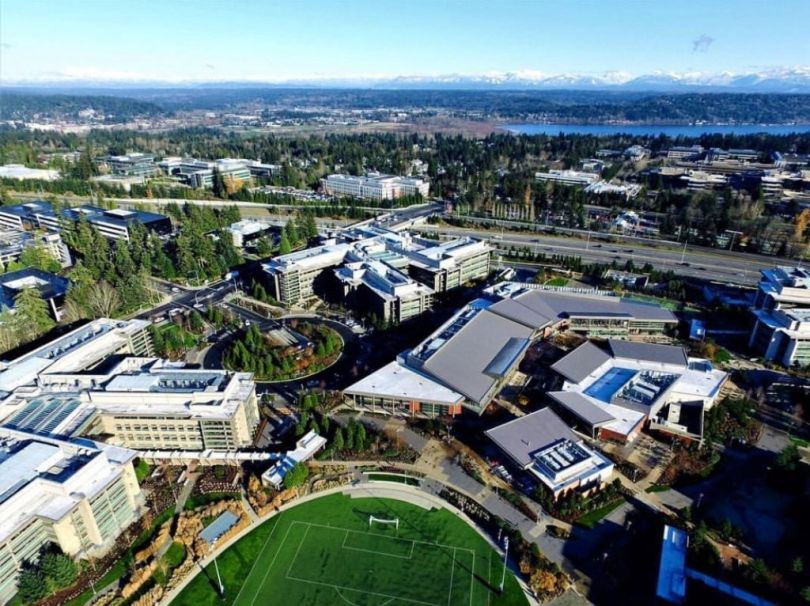 Microsoft Redmond Campus Commons Area with Shops and Restaurants
Microsoft Redmond Campus Commons Area with Shops and Restaurants
Image: Microsoft
Spanning a massive 150,000 square feet, “The Commons” serves as the bustling heart of the Microsoft Redmond campus. This expansive area is designed as a central hub, offering a diverse array of restaurants and retail stores. It’s essentially an on-campus mall, providing employees with unparalleled convenience and a wide range of services right at their doorstep.
The Commons is designed to be a comprehensive amenity, ensuring that Microsoft employees have access to almost everything they might need during their workday. This includes mobile phone service providers, financial services like a credit union, a music store, hair salons, and even an auto-body shop. Whether it’s picking up a last-minute item or handling personal errands, The Commons makes daily life easier for Microsoft employees. Dining options are abundant, featuring coffee shops, gastropubs, made-to-order pizza, vegan and soup bars, and even an outpost of Seattle’s famous Pike Place Market.
Recreational and Wellness Facilities
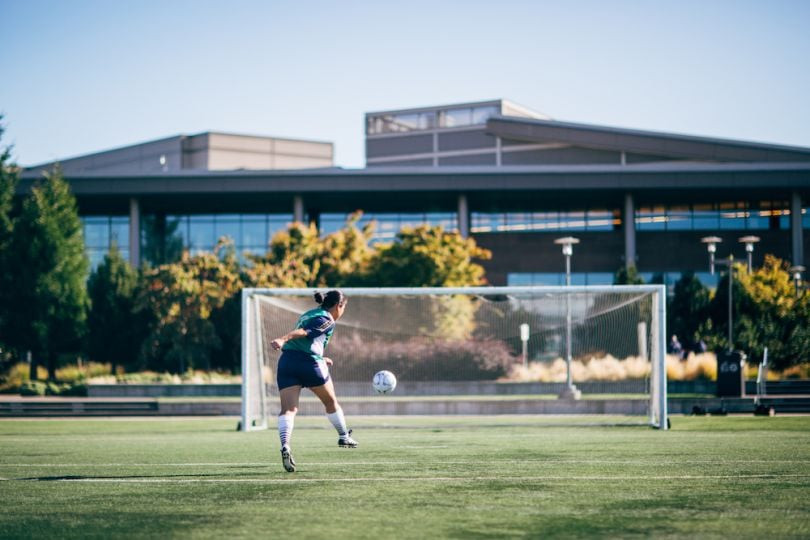 Microsoft Redmond Headquarters Soccer Field and Sports Facilities
Microsoft Redmond Headquarters Soccer Field and Sports Facilities
Image: Microsoft
Reflecting a commitment to employee well-being, the Redmond campus is equipped with extensive recreational and fitness facilities. Employees have numerous options for physical activity and relaxation right on campus. These include a full-sized soccer field, bocce ball courts, basketball courts, softball fields, and beach volleyball courts, encouraging a healthy and active lifestyle.
For those who prefer walking or running, the campus offers marked trails ranging from two to five miles, allowing employees to exercise amidst the campus’s green spaces. The central soccer field is a popular spot, hosting two corporate teams – a men’s team and a co-ed team – highlighting the campus’s diverse and globally connected community, where the world’s most popular sport is a unifying activity.
Versatile Workspaces
While it’s a given that a corporate headquarters includes workspaces, Microsoft’s Redmond campus goes beyond the typical office environment. It provides a seemingly limitless variety of settings for both collaborative projects and individual focused work, empowering employees to choose environments that best suit their tasks and preferences.
From the innovative treehouses and numerous outdoor areas to relaxed cafes and quiet corners, the campus offers a plethora of options for employees to work effectively and comfortably. This variety ensures that every employee can find a space that maximizes their productivity and well-being throughout the workday.
The Future of Microsoft Redmond: Ongoing Innovation
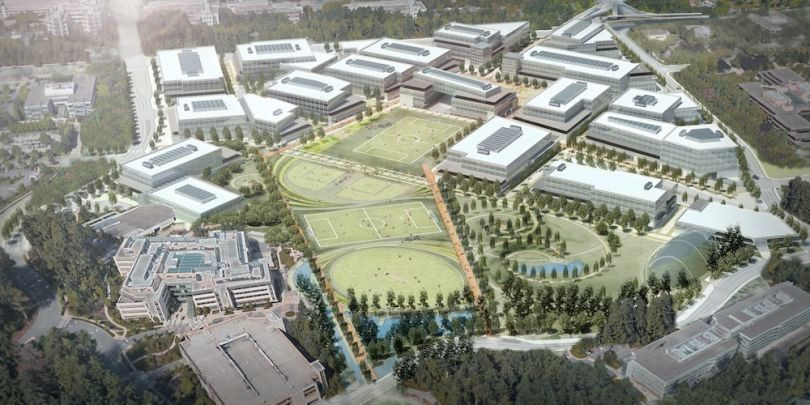 Microsoft Redmond Headquarters Campus Renovation and Expansion Plans
Microsoft Redmond Headquarters Campus Renovation and Expansion Plans
Image: Microsoft
As Microsoft continues to lead in technology and software innovation, it is also committed to evolving its physical workspace. In 2017, the company announced ambitious renovation plans for its Redmond campus, signaling a significant reinvestment in its headquarters. These plans involve a strategic removal of some older buildings to make way for 18 new, modern buildings. This expansion will add 2.5 million square feet of new space, increasing the total building count from 125 to an even more impressive 131 buildings.
The campus redevelopment is not just about adding buildings; it’s about creating a more vibrant and employee-centric environment. The renovation plans include a cricket pitch, a pedestrian bridge to enhance campus connectivity, car-free pedestrian zones to promote safety and walkability, energy-optimized buildings to advance sustainability goals, and a sprawling 2-acre central plaza designed to accommodate up to 12,000 people for large gatherings and events. These enhancements reflect Microsoft’s forward-thinking approach to workplace design, aiming to create a campus that supports innovation, collaboration, and employee well-being for years to come.

